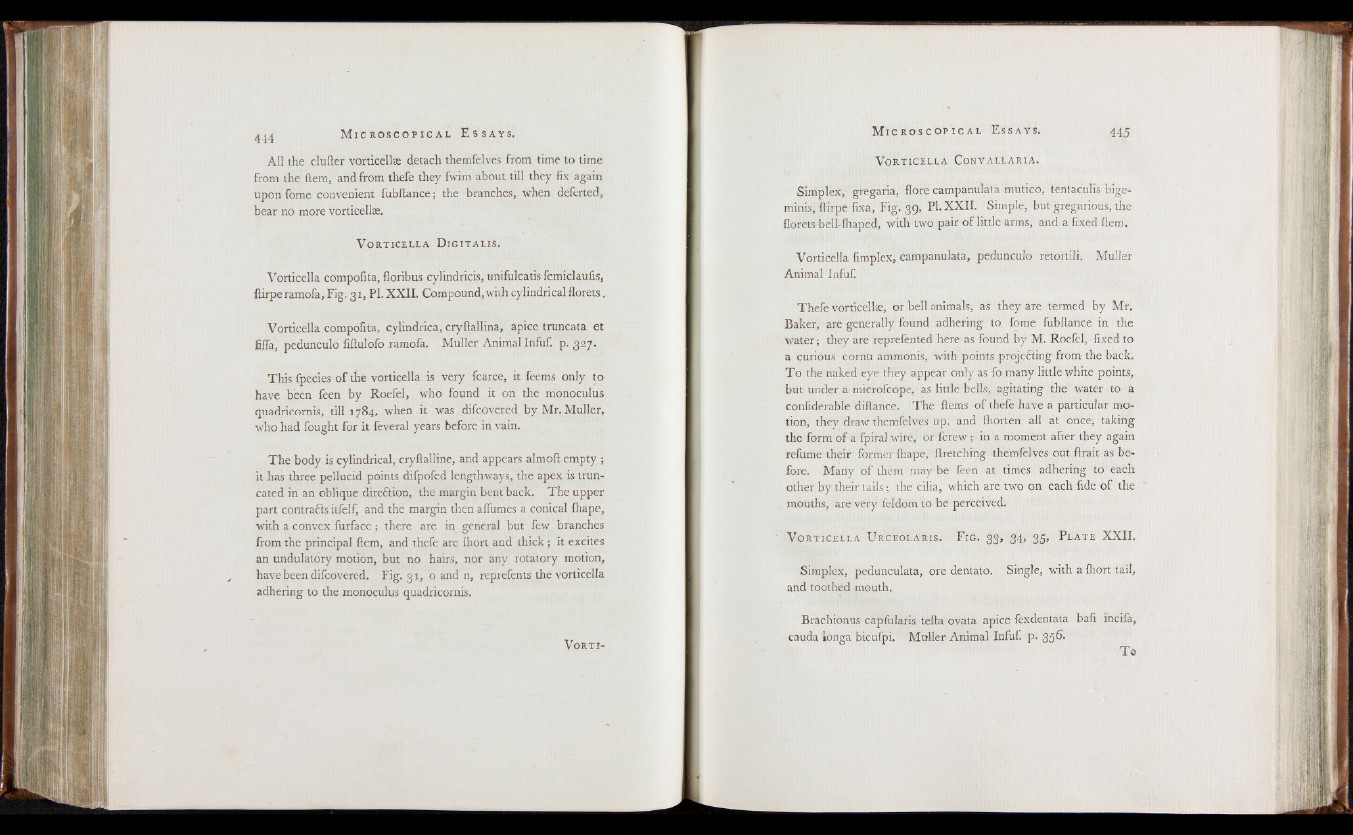
VORT IC E L L A DIGITA L I S .
Vorticella compofita, floribus cylindricis, unifulcatis femiclaufis,
ftirpe ramofa, Fig. 31, PI. XXII. Compound, with cylindrical florets.
Vorticella compofita, cylindrica, cryftallina, apice truncata et
fifla, pedunculo fiftulofo ramofa. Muller Animal Infuf. p. 327.
This fpecies of the vorticella is very fcarce, it feems only to
have been feen by Roefel, who found it on the monoculus
quadricornis, till 1784, when it was difcovered by Mr. Muller,
who had fought for it feveral years before in vain.
The body is cylindrical, cryftalline, and appears almoft empty ;
it has three pellucid points difpofed lengthways, the apex is truncated
in an oblique dire&ion, the margin bent back. The upper
part contrafts itfelf, and the margin then aflumes a conical fhape,
with a convex furface ; there are in general but few branches
from the principal Hem, and thefe are fhort and thick ; it excites
an undulatory motion, but no hairs, nor any rotatory motion,
have been difcovered. Fig. 31, o and n, reprefents the vorticella
adhering to the monoculus quadricornis.
I* ’jjg| ‘1
M i c r o s c o p i c a l E s s a y s .
V orti cella Convallaria.
445
Simplex, gregaria, flore campanulata mutico, tentaculis bige-
minis, ftirpe fixa, Fig. 39, PI. XXII. Simple, but gregarious, the
florets bell-fhaped, with two pair of little arms, and a fixed ftem.
Vorticella fimplex, campanulata, pedunculo retortili. Muller
Animal Infuf.
Thefe vorticellae, or bell animals, as they are termed by Mr.
Baker, are generally found adhering to fome fubftance in the
water; they are reprefented here as found by M. Roefel, fixed to
a curious cornu ammonis, with points projecting from the back.
T o the naked eye they appear only as fo many little white points,
but under a mierofcope, as little bells, agitating the water to a
confiderable diftance. The Items of thefe have a particular motion,
they draw themfelves up, and fhorten all at once, taking
the form o f a fpiral wire, or fcrew ; in a moment after they again
refume their former {hape, ftretching themfelves out ftrait as before.
Many of them may be feen at times adhering to each
other by their tails; the cilia, which are two on each fide of the
mouths, are very feldom to be perceived.
V orti cella Urceolaris. Fig. 33, 34, 35, Plate XXII.
Simplex, pedunculata, ore dentato. Single, with a fhort tail,
and toothed mouth.
Brachionus capfularis tefta ovata apice fexdentata bafi incifa,
cauda longa bicufpi. Muller Animal Infuf. p. 356.
Te
ill